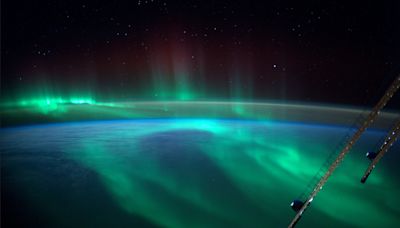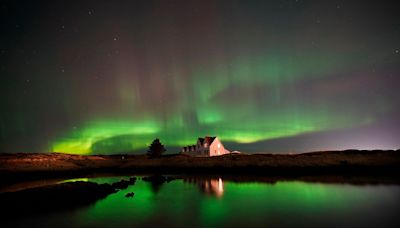Search results
People also ask
Where does 'Aurora Borealis' come from?
Is the aurora borealis rewritten or republished?
Will the aurora borealis be 'bright and active' Sunday night?
When did the aurora borealis dance in Montana?
Find out the location and intensity of the aurora in the northern and southern hemispheres based on the OVATION model. Learn how the aurora is related to space weather and how to observe it from different places.
- 27-Day Outlook of 10.7 cm Radio Flux and Geomagnetic Indices
The 27-day Space Weather Outlook Table , issued Mondays by...
- Models
Aurora - 30 Minute Forecast; CTIPe Total Electron Content...
- Aurora - 3 Day Forecast
Aurora - 30 Minute Forecast. Aurora Viewline for Tonight and...
- Boulder Magnetometer
The Boulder Magnetometer has been in operation since 1961,...
- Tips
So for Kp = 1, the aurora would move down to 64 degrees, for...
- Discussion of The Aurora Phenomena
Current Space Weather Conditions. on NOAA Scales. Aurora....
- 27-Day Outlook of 10.7 cm Radio Flux and Geomagnetic Indices
An aurora (pl. aurorae or auroras), also commonly known as the northern lights (aurora borealis) or southern lights (aurora australis), is a natural light display in Earth's sky, predominantly seen in high-latitude regions (around the Arctic and Antarctic). Auroras display dynamic patterns of brilliant lights that appear as curtains, rays ...
Feb 9, 2024 · Aurora Borealis. Northern lights (aurora borealis): What they are & how to see them. References. By Stefanie Waldek, Daisy Dobrijevic. last updated 9 February 2024. The northern lights are...
- Stefanie Waldek
Jun 10, 2021 · Science. What Causes The Northern Lights? Scientists Finally Know For Sure. June 10, 20215:00 AM ET. By. Joe Hernandez. Enlarge this image. The northern lights (aurora borealis) illuminate the...
- Joe Hernandez
Learn how solar storms create the colorful lights of the aurora borealis and aurora australis in Earth's atmosphere. Find out why auroras are different colors, how they affect Earth, and if other planets have them.
Oct 19, 2023 · Learn about auroras, natural light displays that shimmer in the sky near the poles. Find out how solar wind, Earth's magnetic field, and atmospheric particles create the colors and shapes of auroras.




